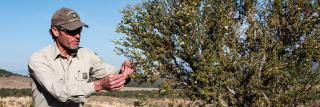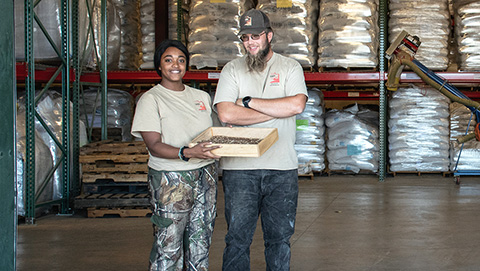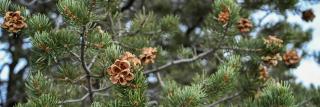
The new Shrub Sciences Laboratory in Cedar City, Utah hasn’t been built yet, but scientists aren’t letting that slow them down.
The lab, a division of the Rocky Mountain Research Station, is partnering with wildlife biologists and fuels management specialists of the Dixie National Forest to conduct research on the Pine Valley Ranger District that will help improve wildlife habitat in sagebrush and pinyon-juniper woodlands.
When the lab relocated from Provo, Utah to Cedar City, they didn’t know that their own back yard would be identified as one of 21 high-risk firesheds threatened by the wildfire crisis.
The district plans to treat thousands of acres of pinyon-juniper woodlands to reduce fuels and the risk of high-severity wildfires. This creates an opportunity to study different types of vegetation treatments, and even test some new ones, with the goal of applying that knowledge to other sagebrush and pinyon-juniper woodland communities.
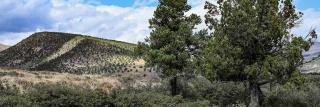
“One of our objectives is to compare the outcomes of the traditional pinyon-juniper treatments, such as lop and scatter or mastication, with an experimental treatment which is more like thinning,” said Sarah Barga, a research botanist at the lab and lead scientist for the project. “The experimental treatment will create more space between trees, but select for age and size class, so there’s more variation. Ultimately the hope is it will be a more attractive habitat for wildlife.”
For the birds
Traditional treatments by heavy machinery tend to leave behind a stark boundary, and Barga expressed some concern for this. Many wildlife species prefer a mix of cover types, and a woodland’s edge is an important feature for wildlife habitat, including the pinyon jay. Since the late 1960s, pinyon jays have declined more rapidly than any other land bird inhabiting sagebrush-associated landscapes, as much as three to four percent annually.
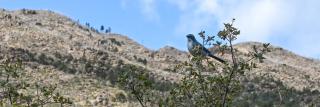
The birds tend to do a lot of foraging, caching, and nesting between the edge of woodlands and shrublands. They follow pinyon cone production, and their behavior helps to disperse seeds that perpetuate their habitat. Their eruptive movements make them difficult to learn about and the cause for their decline isn’t yet understood. But researchers want to know how fuels treatments impact them and the experimental treatments will mimic a more natural gradation in that fuel break boundary.
There are tradeoffs in the experimental and conventional treatment approaches. Conventional fuels removal methods with machinery can remove a lot of trees over large landscapes in less time. Thinning trees will require more attention to detail, may take longer, and require more people. Time and resources are a constant balancing act for land managers, especially when the risk of wildfire is pressing.
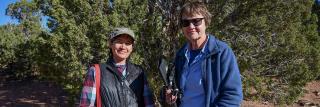
“I understand there is urgent need, and high risk,” she said. “Just because something works scientifically doesn’t mean it works in a practical manner for management.”
The goal is to test how successfully these different approaches can reduce the risk of wildfire while maintaining wildlife habitat, and ultimately give land managers more options when planning fuels treatments.
Grasses matter, too
Managers from the Pine Valley Ranger District met with the RMRS botanists at the end of October to get feedback on which shrub communities to focus on and to address the return of invasive grasses, namely cheatgrass, after soil disturbance. The researchers asked for recommendations on which plants to include in their seed mixes for experimental treatments aimed at reducing invasive species when restoring understory vegetation.
“In those lower elevations of pinyon-juniper and sagebrush, if cheatgrass isn’t already there, you may bring it there once you disturb it,” said Rhett Boswell, the wildlife biologist for the district. “Cheatgrass thrives after disturbance, and especially after fire.”

According to Boswell, long-term monitoring indicates that cheatgrass prevalence on the Pine Valley is higher than all the other forest districts combined. After a fire, native plant communities are often replaced by a monoculture of cheatgrass unless actions are taken to actively manage sites with mechanical treatments and re-seeding efforts.
Decades of the specialists’ experience produced a list of dozens of plants for the lab to try in seeding experiments to help native species grow where invasive cheatgrass may otherwise take over.
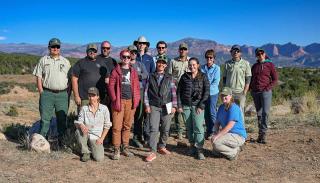
“We’re really grateful for this opportunity to work with the Pine Valley folks,” Barga said. “Everyone has been very supportive and engaged in the process of moving this project forward. It has been wonderful.”
You can find photos for this story in a Flickr album, and learn more about what’s happening on the Dixie National Forest and its Wildfire Crisis Strategy on its webpage.
